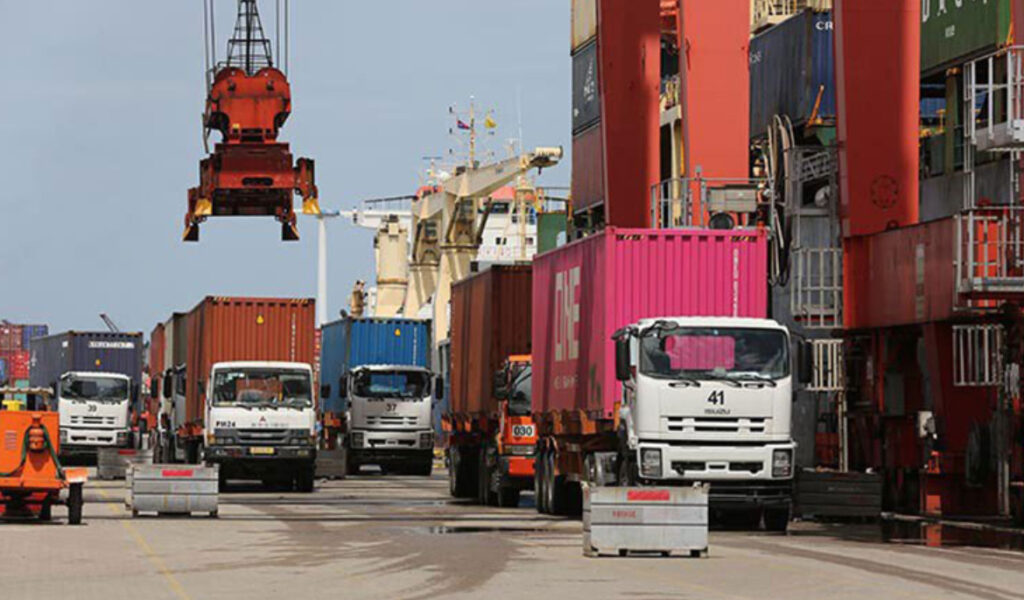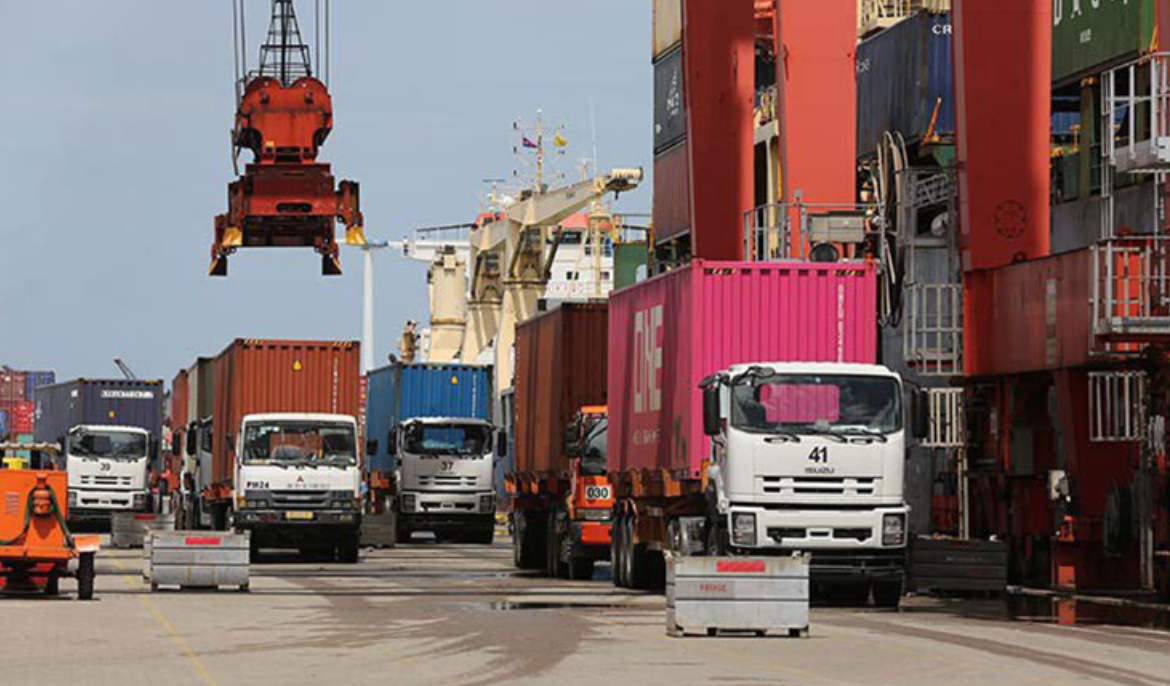Synopsis: The surge in trade reflects the well-functioning economic artery of the country, driven by Cambodia’s stable and growing purchasing power and demonstrating the competitiveness of its exports.
Cambodia’s total trade volume with its top 20 trading partners reached $30.57 billion in the first six months of 2025, representing a strong increase of 17.2 percent compared to $26.09 billion recorded during the same period last year, according to a report released on Thursday by the General Department of Customs and Excise of Cambodia (GDCE).
The Kingdom’s exports rose by 16.2 percent to $14.29 billion, up from $12.30 billion in the first half of 2024. At the same time, imports grew by 18 percent to $16.28 billion, compared to $13.80 billion over the same period last year. As a result, Cambodia’s trade deficit widened to approximately $1.99 billion, from $1.50 billion a year earlier.
China remained Cambodia’s largest trading partner, with total bilateral trade reaching $9.27 billion, an increase of 26.9 percent year-on-year. Despite the growth in overall trade, Cambodian exports to China dropped by 7.9 percent to $750.6 million, while imports from China rose sharply by 31.2 percent to $8.78 billion.
The United States stood as the second-largest trading partner during this period, with trade volume climbing by 25.7 percent to $5.69 billion. Exports to the US increased by 25.6 percent to $5.52 billion, while imports grew by 29 percent to $164.90 million.
Vietnam ranked third in trade partnership, with the total value rising by 7.2 percent to $4.34 billion. Cambodian exports to Vietnam reached $2.19 billion, while imports from the neighbouring country amounted to $2.14 billion.
Trade with Thailand also saw an increase, with total bilateral trade reaching $2.19 billion, a rise of 6.6 percent. Exports to Thailand were valued at $448.09 million, an increase of 1.9 percent, while imports from Thailand expanded by 7.9 percent to $1.74 billion.
Japan maintained its position as Cambodia’s fifth-largest trading partner, with two-way trade surging by 28.7 percent to $1.22 billion. Cambodian exports to Japan reached $753.5 million, marking a growth of 19.9 percent, while imports from Japan rose by 41.8 percent to $469.72 million.
Cambodia also registered strong trade performance with key markets such as Germany, Netherlands, France, Canada, Indonesia, Spain, United Kingdom, Italy, Belgium, South Korea, Singapore, India, Malaysia, Taiwan and Hong Kong.
Experts pointed to the continued resilience of Cambodia’s manufacturing sector, particularly garments, footwear, and agricultural products, as key drivers behind the solid export performance. At the same time, rising imports indicate strong domestic demand for raw materials, machinery, construction supplies, and consumer goods.
Despite the positive export trends, the widening trade deficit—especially with China—remains a concern. The government is pursuing a strategy to diversify export markets, attract investment in value-added industries, and boost competitiveness through trade facilitation, regulatory reforms, and logistics development. These efforts are aimed at sustaining growth amid global economic uncertainties.
Lor Vichet, Vice-President of the Cambodia Chinese Commerce Association (CCCA), told Khmer Times that the trade figures reflect a well-functioning economic system.
“Trade between Cambodia and its 20 major markets reflects the well-functioning economic artery of the country, driven by Cambodia’s stable and growing purchasing power and demonstrating the competitiveness of its exports,” he said.
Vichet explained that the steady increase in trade volume is the outcome of targeted government policies. “The increase in trade volume also indicates that the government has implemented specific policies aimed at promoting exports and imports, resulting in consistent annual growth,” he said. “Political stability, a resilient economy, and a young, skilled labour force have all contributed to enhancing the competitiveness of Cambodia’s exports, as reflected in the trade data.”
Investment continues to play a crucial role, with the Council for the Development of Cambodia (CDC) approving more projects each year, many linked to export industries.
Cambodia’s main trading partners include China, the United States, Vietnam, Thailand, Japan, and the EU. Key exports—garments, footwear, travel goods, bicycles and agricultural products, —have sustained strong performance despite global challenges.
Looking ahead, Vichet expressed confidence that exports will continue to grow as infrastructure investments progress. “Key projects include improving the deep-water port in Sihanoukville, the Funan Techo Canal project, and other infrastructure developments that will support trade,” he said.
With these developments, Cambodia is well-positioned to strengthen its economic foundation and enhance its global trade competitiveness in the years to come.



